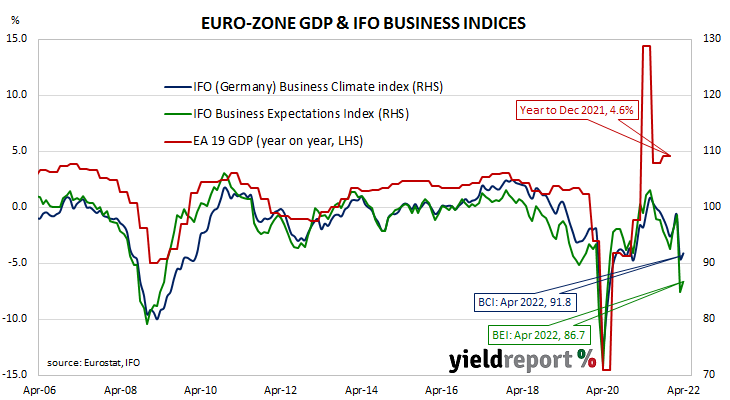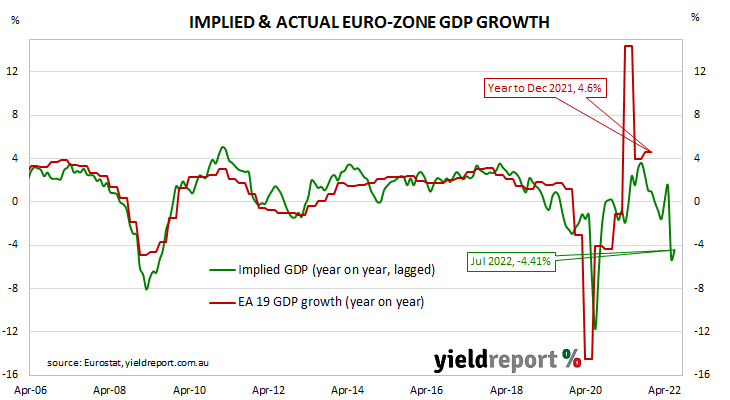Summary: ifo business climate index up in April; above expected figure; current conditions, expectations indices both up; shock of Ukraine war wearing off; growth still subdued at start of Q2; expectations index implies euro-zone GDP contraction of 4.4% in year to July 2022.
Following a recession in 2009/2010, the ifo Institute’s Business Climate Index largely ignored the European debt-crisis of 2010-2012, mostly posting average-to-elevated readings through to early-2020. However, the index was quick to react in the March 2020 survey, falling precipitously. The rebound which began in May of that year was almost as sharp but it was also characterised by a period of below-average readings. Readings through much of 2021 generally fluctuated around the long-term average.
According to the latest report released by ifo, German business sentiment has improved a touch, albeit at a low level. April’s Business Climate Index recorded a reading of 91.8, above the expected reading of 88.1 as well as March’s final reading of 90.8. The average reading since January 2005 is just above 97.
“After the initial shock of the Russian attack, the German economy has shown its resilience,” said Clemens Fuest, President of the ifo Institute.
German firms’ views of current conditions barely changed while their collective outlook improved. The current situation index crept up from March’s revised figure of 97.1 to 97.2 while the expectations index increased from 84.9 to 86.7.
German and French long-term bond yields both fell noticeably on the day. By the close of business, the German 10-year bund rate had shed 12bps to 0.85% while the French 10-year OAT yield finished 10bps lower at 1.01%.
“The index surprised to the upside as it was expected to fall due to the war in Ukraine pushing up energy costs. The stability in the index is encouraging, but the data still argue that growth remains subdued at the start of Q2,” said ANZ senior economist Adelaide Timbrell.
The ifo Institute’s business climate index is a composite index which combines German companies’ views of current conditions with their outlook for the next six months. It has similarities to consumer sentiment indices in the US such as the ones produced by The Conference Board and the University of Michigan.
It also displays a solid correlation with euro-zone GDP growth rates. However, the expectations index is a better predictor as it has a higher correlation when lagged by one quarter. April’s expectations index implies a 4.4% year-on-year contraction in GDP to the end of July 2022.



